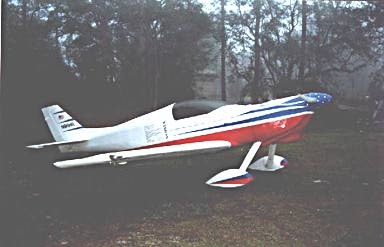August 31 2022
Some findings after my first flight.
The airplane flew well and the engine performed very well. There were some minor issues that presented and will have to be addressed prior to a subsequent flight.
1. After 2 hours of flight slowly decreasing oil pressure presented but cylinder temperatures remained in the green as did the oil temperature.
Details: The belly of the airplane was covered in oil which had escaped from the oil separator can overboard exit point. Three and a half quarts of oil was lost in 2 hours of flight. This appears to have been because I have the exit tube hanging below the lower engine cowling by 3 inches. This resulted in sucking oil out of the low drain back return tube from the engine case. I have changed the oil exit tube to be only 1/2 inch below the belly skin which is still 2 inches above the lower engine cowling lip. I originally had this vent tube with the angle facing backward and have changed it to face forward as was recommended. This might have compounded the negative pressure in the tube besides it's hanging to low issue. I have taken the oil separator completely out of the vent line circuit for now in case it was causing some sort of venturi effect within it's interior. Now the vent line rises 2 " as it exits the engine and drops down to the exit point 1/2 inch below the belly skin and still 2 inches above the lower aft edge of the engine cowling.
2. Bad landing with low left wing caused bending of the pitot tube as it touched the pavement on exiting runway.
Details: The pitot tube was bent back into shape and it tested working fine. A bit of liquid metal was used to cover up the scrape marks and was then filed smooth and surface painted. The under side of the wing was damaged at this location and the pitot tube mounting nuts had to be lined up and re-bonded. The skin was punched in a bit and was repaired and resurfaced smooth.
3. Rudder pedal vertical tubes need reinforcing with gussets.
Details: During my landing and exiting of the runway into the grass my tail wheel went into full swivel turning me left. I hammered on the right rudder pedal trying to arrest the left turn and partially broke the right rudder pedal. This again was my mistake as my only steering option at this point would have been to use right brake to arrest the turning. I have since seen a Service Letter that VANS aircraft had issued to it's owners to re-enforce the rudder pedal vertical tubes with a gusset. This I have done, as I believe it is a good safety upgrade.
4. Aircraft is flying in a slightly nose heavy attitude with full nose up trim set. During the test flight I had to hold very slight back pressure on the stick throughout the flight.
Details: I am going to add more weight to the elevator counterweight because I found it to be under balanced after installation. I am also modifying my tailspring by making it longer and with a little more bend. This will add a bit of weight to the tail and raise the tail for a bit better forward visibility. If more weight should be needed I have designed it so I can can bolt a piece of lead directly onto the tailspring.



